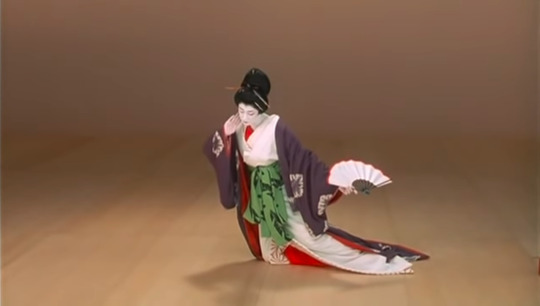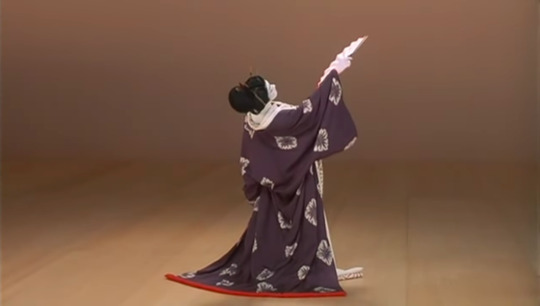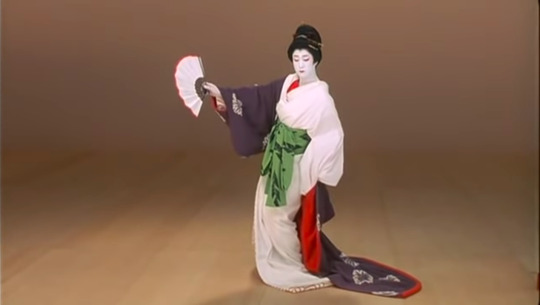#Tamasaburo bando
Explore tagged Tumblr posts
Text




Masahiro Shinoda - Demon Pond (1979)
296 notes
·
View notes
Photo

by Kishin Shinoyama / 篠山紀信 Tamasaburo Bando V, Kabuki actor / 五代目 坂東 玉三郎 From the book: Tamasaburo Bando / 坂東玉三郎 (1978)
71 notes
·
View notes
Photo
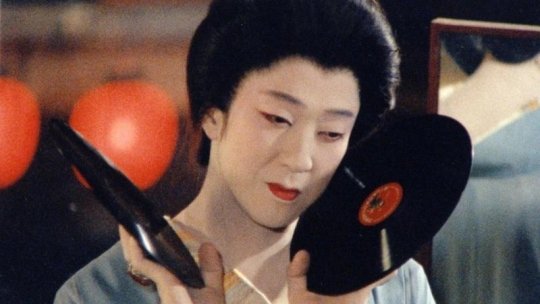
Daniel Schmidt
- The Written Face
1995
#daniel schmidt#written face#the written face#tamasaburo bando#bandō tamasaburō v#bando tamasaburo v#五代目 坂東 玉三郎#坂東玉三郎#documentary#1995#vinyl#kabuki
77 notes
·
View notes
Text
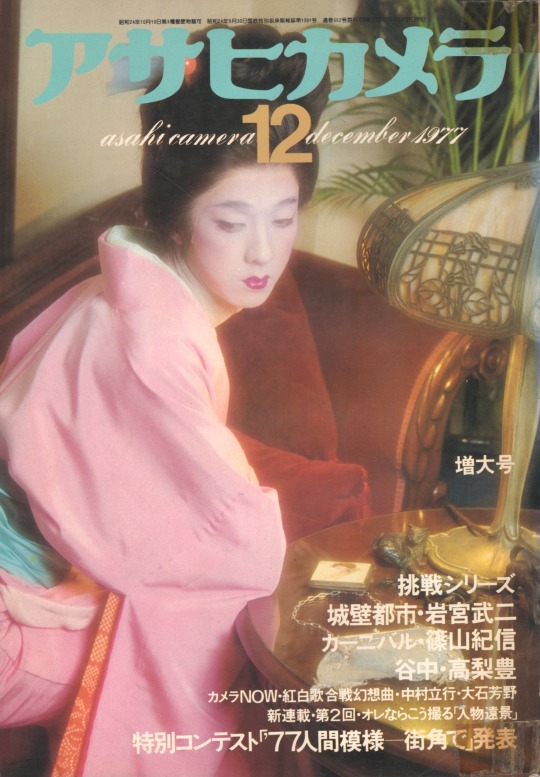
アサヒカメラ 1977年12月増大号 朝日新聞社 表紙=「坂東玉三郎」写真・大倉舜二
#アサヒカメラ 1977年12月増大号#ASAHI CAMERA#asahicamera#tamasaburo bando#坂東玉三郎#shunji okura#大倉舜二#anamon#古本屋あなもん#あなもん#book cover
29 notes
·
View notes
Text
youtube
Yo-Yo Ma - Inspired by Bach Struggle for hope with Tamasaburo Bando - Bach - Suite No. 5 for Unaccompanied Cello 希望への苦闘~バッハ: 無伴奏チェロ組曲第5番~ (1996)
27 notes
·
View notes
Text
DEMON POND:
The bell must be read
So village won’t be flooded
Kabuki Princess
youtube
#demon pond#random richards#poem#haiku#poetry#haiku poem#poets on tumblr#haiku poetry#haiku form#poetic#criterion collection#kabuki theatre#Yashagaike#Tamasaburo bando#Go kato#tsutomu yamazaki#Hisashi igawa#masahiro shinoda#kyoka izumi#Tsutomu Tamura#Haruhiko Mimura#Fujio Tokita#Hatsuo Yamaya#Koji Nanbara#Toru Abe#Yatsuko Tanami#Youtube
0 notes
Text





The Written Face (1995), featuring Bandō Tamasaburō V (五代目 坂東 玉三郎)
#the written face#bandō tamasaburō#bando tamasaburo#kabuki theatre#onnagata#documentary#film#kimono#geisha#oiran
21 notes
·
View notes
Text




Actors Sawamura Tosshô, Bandô Mitsugorô, & Bandô Tamasaburô, Utagawa Kuniyoshi, 1843
#utagawa kuniyoshi#edo period#ukiyo-e#nishiki-e#sawamura tossho#bando mitsugoro#bando tamasaburo#three page spread
10 notes
·
View notes
Text

Ebi Zori - Backbend
The actor Bando Tamasaburo appears as the spirit of the Cherry Tree in the Kabuki play "Seki no To" performing a backbend known as Ebizori (literally prawn bend).
The tree is threatened by an evil character, Sekibei, wielding a huge axe. She bends like a prawn to escape the enormous blade.
#art#japan#japan art#kabuki#kabuki theatre#bando tamasaburo#japanese culture#japanese art#ukiyoe#japanese theatre#woodblock#woodblock print#ukiyo e#asian art#paul binnie
9 notes
·
View notes
Photo

A screening of 4 gems of cinema Kabuki, starring Kyoka Izumi and Tamasaburo Bando
92 notes
·
View notes
Text



Masahiro Shinoda - Demon Pond (1979)
123 notes
·
View notes
Note
why is sanzang often a woman in japanese media? even dbz bulma is his female counterpart.
I can’t say for sure why this all began but I can say that it was most likely because of the first popular Japanese version to do it.
Monkey Magic (1978) also known as Saiyuki isn’t the first Japanese Xiyouji content but it was definitely one of the most influential since many Japanese media followed its example and had Sanzang be a woman. Most of this is parodies of the show, directly influencing it, or rather having Sanzang be the token girl in their product.
Before the TV series was produced, the director planned to turn it into a movie and have it in a kabuki style. He wanted Tamasaburo Bando to play the role of Tang Monk (Sun Wukong is Wakayama Tomisaburo, Zhu Bajie is foreign sumo wrestler Takamiyama Daigoro, and Sha Monk is Nakadai Tatsuya), But they couldn't reach an agreement and didn't hire him. Later, they re-planned the cast and boldly hired women. After using Natsume Masako, the response was surprisingly great. Later versions of Tang Monk were all played by female actors as well.
Some viewers may think that Tang Monk in the play is a woman because of Natsume Masako. But the intention of the show is that it the actress was playing a male role. Later Japanese remakes also used this setting casting the actor of Master Tripitaka as female. The first episode of Journey to the West was broadcast on Japan Television from October 1, 1978 to April 1, 1979, with a total of 26 episodes. Because the series is very popular in Japan, The Japan Television Bureau produced and broadcast 26 episodes of "Journey to the West II" from November 11, 1979 to May 4, 1980.
On the other hand, in China, in case of making Master Tripitaka a girl, others commented that it was tampering with the original work. certainly, In this work, Master Tripitaka was not set as a female; it's just because the actress played a male role, so it's a misunderstanding.
I can’t say for certain why they made Sanzang a girl in the 1970s but the best I can say is that it could follow that more Japanese humor of having a “damsel in distress” tv trope since that was pretty common around that era. It could be that the producers were trying to have that angle of showing Sanzang as a younger boy since women did play male youth often enough in older films, it certainly wasn't unheard of. And that only later adaptions tried to go for a romance angle considering that there are no real female leads and it was highly doubtful they would have a male romance. I haven’t watched the show myself so I can’t be 100% certain just based on what clips I have seen.
But needless to say, it’s because of that version we see so many girl Sanzangs in Japanese media, and I honestly don’t know if maybe another version down the line could’ve done the same gender swap and be just as influential or not.
#anon ask#anonymous#anon#jttw#journey to the west#sun wukong#xiyouji#ask#tang sanzang#monk tripitaka
12 notes
·
View notes
Text
A 2022 performance of Sagi Musume
youtube
Status Post #11187: Unlike most cases in which they're performed by onnagata (Kabuki actors playing female roles) such as Bando Tamasaburo V, this was performed by nihon-buyō dancer Marikusa Hanayagi, who is female.
1 note
·
View note
Text




Yatsuhashi (Bandō Tamasaburō V) glances back at a smitten Jirozaemon in Kagotsurube Sato no Eizame
#his face card is absolutely insane here#bando tamasaburo#bando tamasaburo v#kabuki theatre#kabuki#onnagata#oiran#geisha#tayu#kimono#edo period#japanese art#japanese theatre#theatre#my edits#my gifs
11 notes
·
View notes

